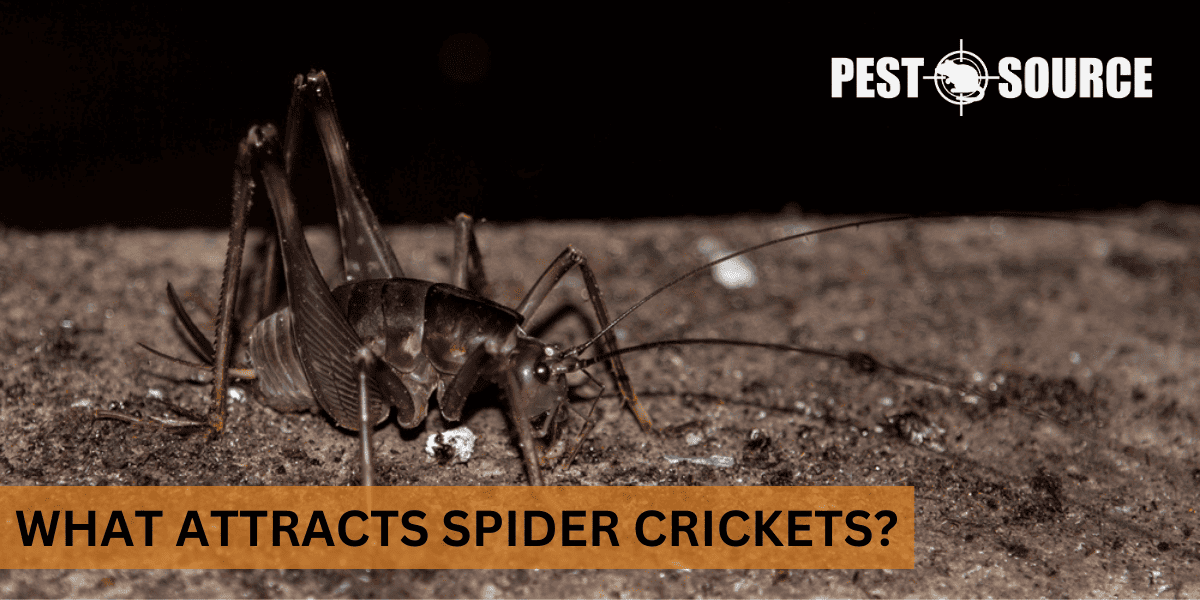Spider crickets are attracted to moist, dark environments as they provide ideal conditions for shelter and breeding. They are also drawn to organic materials like fungi, fabric, and wood for food. Understanding these attractions is crucial for preventing infestations. This article will offer detailed advice on reducing these factors in your home to keep spider crickets at bay.
POINTS
- Maintain low humidity levels and fix any moisture issues, as spider crickets are attracted to damp environments.
- Keep your home clean and decluttered to minimize dark and undisturbed spaces where spider crickets like to hide.
- Control other insect populations in your home, as spider crickets feed on various insects and organic matter.
- Seal cracks, crevices, and ensure window screens are intact to prevent spider crickets from entering your home.
- Use natural deterrents like essential oils and diatomaceous earth, and consider professional pest control if infestations persist.
Fundamental Attractors of Spider Crickets
Spider crickets, also known as camel crickets, are a common pest found in many homes, particularly in basements and crawl spaces. Understanding what attracts spider crickets is crucial for effective pest control. Let’s delve into the primary factors that draw spider crickets into your living space.
Moisture and Damp Environments
Spider crickets are attracted to moisture and dampness. They thrive in environments where the humidity is high because it’s essential for their survival. Basements, garages, and crawl spaces often provide the perfect level of moisture they require. To prevent an infestation, it’s important to address any water leaks, condensation issues, or high humidity levels in your home.
Dark and Undisturbed Spaces
These crickets are nocturnal creatures, preferring dark and undisturbed areas during the day. Cluttered storage rooms, seldom-used corners, and areas filled with debris can become safe havens for spider crickets. Regular cleaning and decluttering can reduce the chances of these crickets taking up residence in your home.
Organic Matter and Other Insects
Spider crickets are omnivorous and will feed on a variety of organic matter, including plants, fungi, and even other insects. This means that a home with a pre-existing insect problem could be more susceptible to a spider cricket infestation. Keeping your home clean and free of food debris can help minimize the attraction.
Household Materials
Spider crickets are also known to chew on fabrics, papers, and other materials that contain cellulose. This can lead to damaged clothing, ruined books, and other household items. Storing such items in well-sealed containers can help protect them from these pests.
Household Smells and Chemicals
Certain smells or chemicals may either attract or repel spider crickets. While research on specific attractants or repellents is ongoing, maintaining a clean home with minimal odors can help deter these pests. Some homeowners have found success using essential oils or vinegar solutions as natural deterrents.
Environmental and Climatic Conditions Influencing Spider Cricket Presence
Spider crickets are not just influenced by the immediate environment of your home; broader climatic conditions also play a role in their presence.
Climate and Weather Patterns
These pests are more prevalent in areas with temperate climates, where the weather is consistently moist and cool. They are less common in extremely dry or cold regions. Being aware of your local climate can help you anticipate and prepare for potential infestations.
Light and Darkness
The nocturnal nature of spider crickets means that they are more active in darkness. They are generally averse to bright lights, so they tend to avoid well-lit areas. Conversely, darkened areas around your home can attract them. Using light strategically, such as keeping the basement well-lit at night, can discourage these crickets from settling in.
Human Activities and Artificial Lighting
The way we live can inadvertently create ideal habitats for spider crickets. Overuse of artificial lighting, especially at night, can attract insects that spider crickets feed on, inadvertently inviting them into our homes. Being mindful of outdoor lighting and window coverings can lessen the chances of attracting these pests.
Spider crickets are drawn to homes due to a combination of factors including moisture, darkness, available food sources, and certain household materials. By understanding what attracts them, you can take proactive steps to make your home less inviting and prevent an infestation before it starts.
Spider Crickets’ Interactions with Other Household Pests
The presence of spider crickets in a household can be indicative of a larger ecosystem at play. These insects don’t exist in isolation; they interact with other household pests, which can influence their behavior and the likelihood of an infestation.
Ecosystem Dynamics in a Household
In the micro-ecosystem of a home, spider crickets may be both predator and prey. They feed on other insects, which means homes with existing pest issues, like ants or cockroaches, might be more appealing to them. On the flip side, spider crickets can also become food for larger predators, such as spiders or centipedes.
Influence of Other Insects
The presence of certain insects can increase the chances of attracting spider crickets. For instance, a house with a high population of silverfish, which thrive in similar damp conditions, might also support a population of spider crickets. Therefore, controlling other insect populations is an important step in managing spider cricket numbers.
Strategies for Preventing Spider Cricket Infestation
Preventing an infestation of spider crickets is more desirable than dealing with one after it occurs. Here are practical steps you can take to deter these pests from taking up residence in your home.
Moisture Control
- Fix leaks: Repair any plumbing leaks as soon as they’re detected.
- Use dehumidifiers: Keep basements, crawl spaces, and other prone areas dry with the help of dehumidifiers.
- Proper ventilation: Ensure good airflow throughout your home, especially in areas where moisture can accumulate.
Clutter Reduction
- Regular cleaning: Vacuum and dust your home regularly to remove potential food sources and disturb any hiding places.
- Declutter: Reduce clutter, especially in storage areas, to minimize the number of places where spider crickets can hide and breed.
- Seal containers: Store fabrics, papers, and similar materials in sealed containers to protect them from being chewed on.
Home Maintenance
- Seal entry points: Caulk cracks and crevices in walls and foundations to block entry points.
- Window screens: Ensure that window screens are intact to prevent spider crickets from entering.
- Outdoor lighting: Use yellow bulbs or sodium vapor lights outdoors, which are less attractive to the insects that spider crickets feed on.
Natural Deterrents
There are a few ways to control spider crickets naturally.
- Essential oils: Some essential oils, like peppermint or lemon, can act as natural repellents.
- Diatomaceous earth: Sprinkle food-grade diatomaceous earth around areas where spider crickets are found to deter them without using chemicals.



